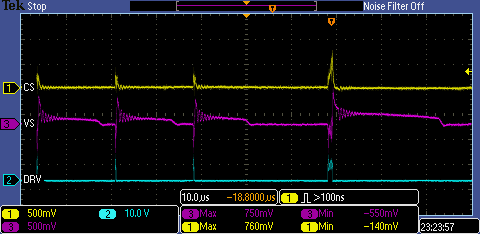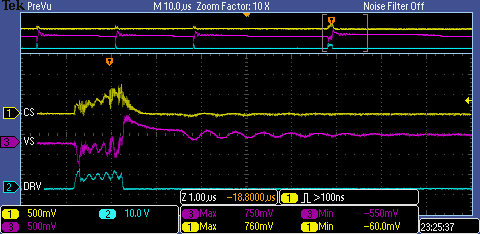I am trying to push the limits of this little flyback, ideally I would like to achieve a 100W 12V output. If this cannot be reached that is fine, but I need to get the controller to turn on so I can evaluate the limits of my circuit. I have selected a MOSFET that can be turned on by the 25mA DRV pin, and I am using a non-dissipative snubber with the fastest diodes I could find (15ns trr). I can provide schematic and board layout if that can help.
Here is the hangup:
The controller appears to to perform the startup operation described in section 8.4.4 of the datasheet, switching the FET three times with a short impulse. This can be seen in the scope capture below. It then looks as if it is trying to start up as it produces a DRV signal to the gate of significant duty cycle, but then returns to a reset procedure. The circuit behaves this way for a few cycles on startup, and then remains in a low power state where it just produces the initial three pulses with no significant switch following.
I initially assumed that the controller must be getting a bad measurement as my circuit had some ringing. I have since improved this and verified that the CS and VS values are well within the limits throughout its operation. Aside from placing high freq caps on CS and VS, does anyone have advice that can help me get this controller up and running? What are the possible conditions that would create this behavior?



